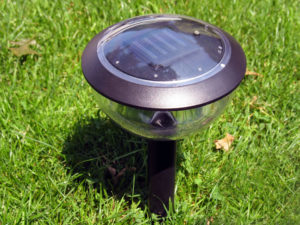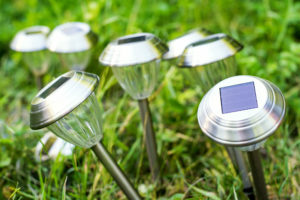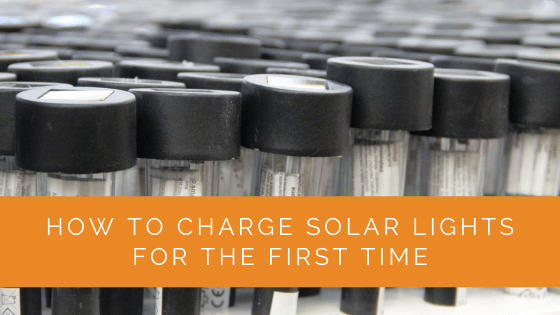One of the best ways to save money on your energy bill is by using solar lights. Solar lights are becoming more popular because they are affordable, easy to install and maintain, and eco-friendly.
Many benefits come with owning solar lighting, but there’s also an important step that needs to happen before you’re able to enjoy these benefits: charging them!
Read this post for instructions on how to charge solar lights for the first time so you can start saving money right away!
Contents
- 1 How to Charge Solar Lights for the First Time
- 2 The Benefits of Solar Lights
- 3 Solar Lighting Tips
- 4 Solar Lights FAQ
- 4.1 How long does it take to charge solar lights?
- 4.2 How do I know when my lights are charged?
- 4.3 Why do I need to orient the solar panel towards the sun?
- 4.4 How do solar lights work?
- 4.5 Can I use solar lights in cloudy weather?
- 4.6 How long will my solar lights last?
- 4.7 Do I need to keep my solar lights in direct sunlight?
- 4.8 How do you test a solar light?
- 4.9 What should I do if my solar light isn’t working?
- 4.10 Why is there an on/off switch on solar lights?
- 5 Case Study: First-Time Charging of Solar Lights
- 6 Expert Insights From Our Solar Panel Installers About How to Charge Solar Lights for the First Time
- 7 Our Expertise in Solar Lights
- 8 Conclusion
How to Charge Solar Lights for the First Time
With these simple steps, you can get your solar lights up and running in no time. Now that they are charged, you will be able to enjoy using them for years to come!
- First, you will need to find a sunny spot in your yard or garden. Solar lights work best when they are in direct sunlight.
- Once you have found a good spot, remove the light from its packaging and unfold it. Be careful not to damage the solar panel while unfolding it.
- Next, orient the solar panel so that it is facing the sun. That’s all there is to it!
The Benefits of Solar Lights
If you are looking for ways to save money on your energy bill, there is no better way than by installing solar lights.
The benefits of owning a set of solar lighting are many: they are easy to install and maintain, affordable, eco-friendly, safe to use around kids and pets because there’s no need for an electrical outlet or wiring installation!
In addition, solar lights come with a host of other benefits:
- They are perfect for illuminating pathways, driveways, and entrances.
- Solar lights can be used to accentuate your landscaping or garden.
- They provide increased security by deterring burglars and increasing visibility at night.
- Solar lights are also great for camping trips!
Once you have charged your solar lights, enjoy all of these benefits and more! With proper care, your solar lights should last for years to come.

Solar Lighting Tips
Here are a few tips to help you get the most out of your solar lighting:
- Make sure to orient the solar panel towards the sun for the best results. If it isn’t getting direct sunlight, the light won’t charge properly.
- If you’re not going to be using your solar lights for an extended period of time, be sure to take them out of the sun and store them in a cool, dry place.
- Clean your solar panel regularly with a soft cloth to ensure that it’s getting the most sunlight possible.
Solar Lights FAQ
How long does it take to charge solar lights?
It usually takes about eight hours for solar lights to fully charge. However, this may vary depending on the type of light and how much sunlight it is exposed to.
How do I know when my lights are charged?
Once they have been charging for a couple of hours in direct sunlight, you should see some green or blue LED lights turn on. This lets you know that the battery has started to charge! For best results, make sure there is plenty of sun shining on them while they’re charging.
For more information about how long your specific model takes to charge, check out the manufacturer instructions. You’ll also learn what other indicators mean so that you always know whether solar lighting needs additional time outside or is fully charged and ready to use.
Why do I need to orient the solar panel towards the sun?
The solar panel needs direct sunlight to convert energy from the sun into energy that the solar light can use.
Without properly orienting it, your solar light will be unable to absorb enough sunlight and won’t charge fully!
How do solar lights work?
Solar lights work by converting the sun’s energy into electrical power. This power is stored in a battery, which then powers the light at night. The more sunlight solar panels receive during the day, the more power they will store for use at night.
Can I use solar lights in cloudy weather?
Solar lights can still function in cloudy weather; however, they may not charge as quickly or as fully as if they were in direct sunlight. It is best to move them to a sunny spot if possible when charging them on overcast days.

How long will my solar lights last?
This depends on the quality of the light and how often it’s used, but generally, it should last for around five years.
Do I need to keep my solar lights in direct sunlight?
No, you do not need to keep your solar lights in direct sunlight. They will still charge as long as they are in the sun at some point during the day.
How do you test a solar light?
You can test solar lights by simulating nightfall by completely covering the sensor to simulate darkness with your hand.
What should I do if my solar light isn’t working?
If your solar light isn’t working, the first thing you should do is check to make sure it is properly oriented so that the solar panel is facing the sun. If it is properly oriented and still not working, try replacing the battery. If that doesn’t work either, then there may be something wrong with the light itself and you will need to replace it.
Why is there an on/off switch on solar lights?
The on/off switch is used to conserve battery life when the solar light is not in use. It can also be helpful if you need to move the solar light to a new location and want to wait until it’s fully charged before using it again.
Case Study: First-Time Charging of Solar Lights
Background
At Solar Panels Network USA, we often guide customers on the best practices for setting up and charging their solar lights for the first time. Proper initial charging is critical to ensure that solar lights function optimally and have a long lifespan. This case study outlines our approach to helping a client correctly charge their new solar lights.
Project Overview
A client purchased several solar garden lights and was eager to set them up and start using them. They sought our advice on the best way to charge these lights for the first time to ensure they would work efficiently and reliably.
Implementation
Step-by-Step Charging Process
- Finding the Perfect Spot: We advised the client to find a sunny spot in their yard or garden. The solar lights needed to be placed where they would receive direct sunlight for the majority of the day.
- Unpacking and Setup: Once the location was identified, the client carefully removed the lights from their packaging, ensuring not to damage the solar panels. We emphasized the importance of handling the solar panels gently to avoid any scratches or damage that could impair their efficiency.
- Proper Orientation: The client then oriented the solar panels to face the sun directly. We explained that the angle and direction of the panels are crucial for maximizing sunlight absorption.
- Charging Duration: We recommended leaving the lights in direct sunlight for at least 8 hours for the initial charge. This allows the batteries to charge fully, ensuring they can provide consistent illumination throughout the night.
- Testing the Lights: After the initial charging period, we instructed the client to test the lights by covering the solar panel to simulate darkness. This test confirmed that the lights were charged and ready for use.
Results
Following our guidance, the client successfully charged and set up their solar lights. They reported excellent performance, with the lights providing bright, consistent illumination throughout the night. The client appreciated the clear instructions and maintenance tips, which helped them maximize the benefits of their new solar lights.
Summary
This case study highlights the importance of proper initial charging and setup for solar lights. By following simple steps and ensuring correct orientation and charging, solar lights can perform optimally and provide reliable illumination for years. At Solar Panels Network USA, we are committed to helping our clients achieve the best results with their solar lighting solutions through expert advice and support.
Expert Insights From Our Solar Panel Installers About How to Charge Solar Lights for the First Time
Charging your solar lights properly the first time ensures their optimal performance and longevity. Make sure they get full direct sunlight for at least 8 hours for the best results.
Senior Solar Technician
Orienting the solar panel correctly towards the sun is crucial. This maximizes the energy absorption, ensuring that your lights will work efficiently at night.
Lead Solar Installer
Regular maintenance, like cleaning the solar panels and ensuring they are not obstructed, can greatly enhance the charging efficiency and lifespan of your solar lights.
Solar Installation Specialist
Our Expertise in Solar Lights
At Solar Panels Network USA, we’re here to provide you with valuable information and support regarding solar lighting. With our experience and understanding of the solar lighting industry, our team of experts is prepared to assist you in finding the right lighting solution for your needs. Whether you’re interested in improving your outdoor spaces, conserving energy, or adopting a more sustainable approach, we’re well-equipped to help. Please feel free to contact us with any questions or inquiries.
Conclusion
The instructions for charging solar lights are simple. After you have installed your new solar light, place it in a sunny area out of direct sunlight and leave the unit to charge. You will know that the unit is fully charged when it turns on at night with no need for an electric power source or battery backup.
The environmental benefits of solar lighting are undeniable. Not only do they provide an attractive low-cost illumination, but they also reduce your dependence on the electric grid by generating your own electricity.
About the Author
Solar Panels Network USA stands at the forefront of solar energy solutions, driven by a team of seasoned solar engineers and energy consultants. With over decades of experience in delivering high-quality solar installations and maintenance, we are committed to promoting sustainable energy through customer-centric, tailored solutions. Our articles reflect this commitment, crafted collaboratively by experts to provide accurate, up-to-date insights into solar technology, ensuring our readers are well-informed and empowered in their solar energy decisions.

